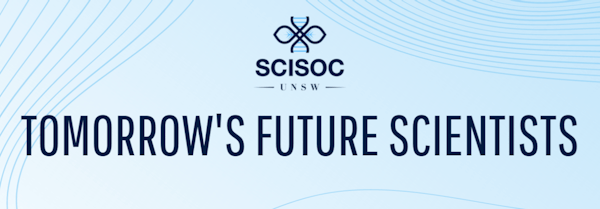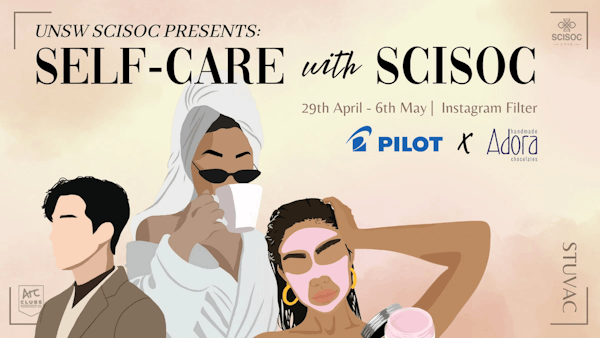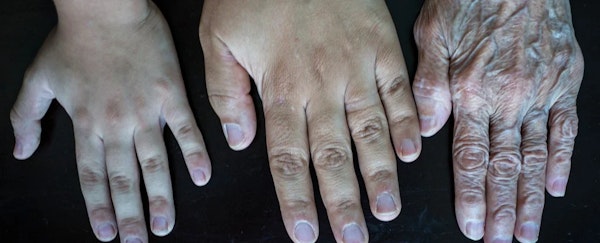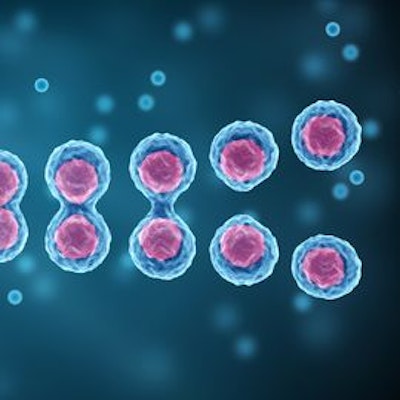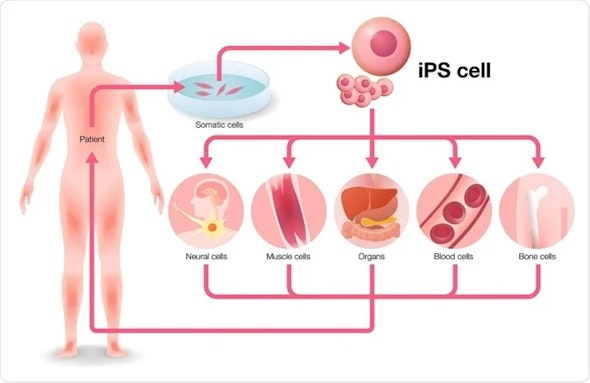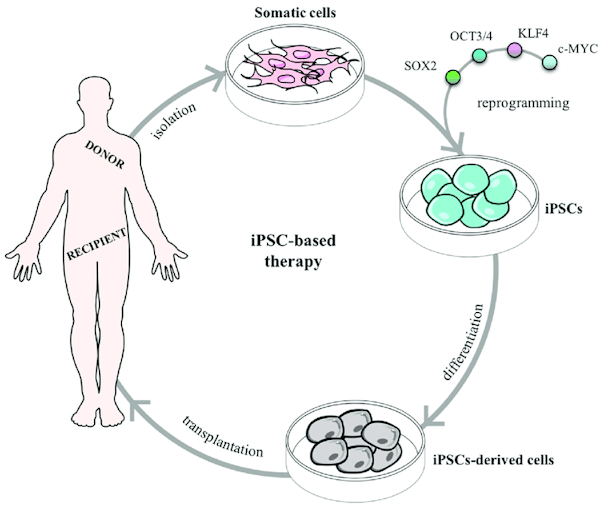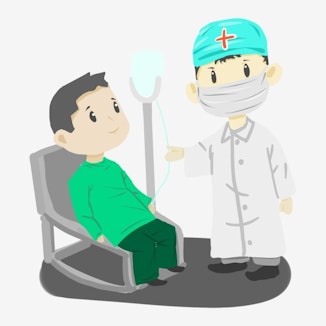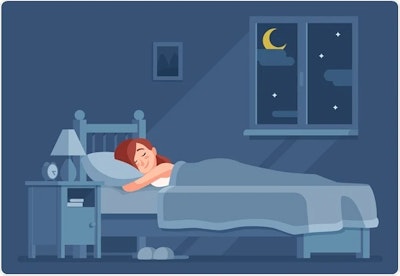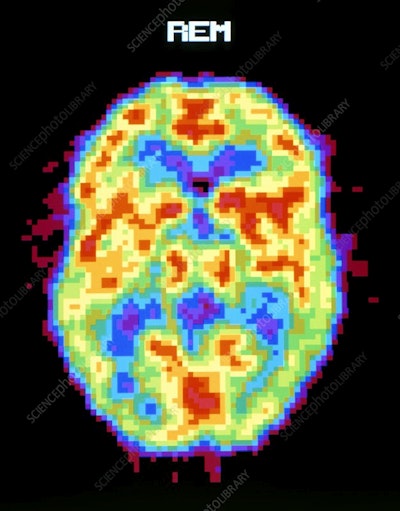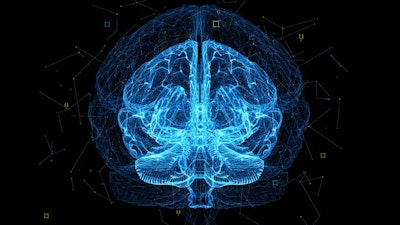Welcome back to PRISM, the SCISOC newsletter! We hope you have had an excellent holiday rest! In this fortnight's newsletter, we present our exciting SCISOC Euphoria Cruise and our Self-Care event! In our Science News, we explore the ability of human skin to ‘rewind’ through old skin cells. Finally, in our Fun Corner, we examine the truth behind the reason we dream. |
|
|
UNSW SCISOC Presents: Euphoria Cruise On the 23rd of May, we hosted our very own Euphoria themed cruise where we danced the night away in a magical wonderland, filled with sparkles and a glimmering dance floor with flamboyant neon lights reflecting in the waters of Sydney Harbour! Thank you for attending and we hope everyone enjoyed the dazzling night. We can't wait to see you all again! |
|
|
UNSW SCISOC Presents: Self-Care with SCISOC Since you all loved the self-care packages that SCISOC gave out for Wellness Week, we decided to run it back and give out another round of self-care packages to 10 lucky participants. Similar to our last one, these packages were filled with goodies from our amazing sponsors Pilot Pens and Adora Chocolate, of which participants entered the giveaway by uploading a photo or video that exhibited an act of self care with our immaculate Wellness Week instagram filter. |
|
|
If you have missed out, don’t worry! Be sure to follow our Facebook page so that you do not miss out on our next SCISOC Philanthropy event or any other amazing events! |
|
|
Old Skin Cells Reprogrammed to Regain Youthful Function Babraham Institute researchers have come up with a method to allow human skin cells to ‘rewind’ back 30 years, turning back the aging clock for cells without losing their specialized functions. While this is at an early stage of exploration, it could revolutionize the future of regenerative medicine. |
|
|
As we age, our cell’s functionality declines over time and the genome, or the genetic material within a cell or organism, accumulates marks of aging. Regenerative biology aims to either repair or replace these old cells through a process that creates ‘induced’ stem cells. These ‘induced’ stem cells, in theory, have the capacity to become any cell type, however scientists aren’t yet able to reliably recreate the conditions to turn stem cells into all cell types. |
| |
|
Based on the Nobel Prize winning method of creating stem cells, a new method has been born which overcomes the problem of erasing cell identity. It involves halting reprogramming partway through the process, which allowed scientists to identify the precise balance between reprogramming cells and making them biologically younger, while simultaneously allowing them to regain their specialized cell function. |
|
|
In 2007, Shinya Yamanaka became the first scientist to turn normal cells, which have a specific function, into stem cells with the ability to evolve into any cell type. The full process of reprogramming would usually take 50 days utilizing 4 key molecules, the Yamanaka factors. The new method, named the 'maturation phase transient reprogramming', exposes the cells to Yamanaka factors for just 13 days. This causes the age-related changes to be removed from the cell and it would have temporarily lost its identity and function. However, after growing under normal conditions for some time, the cells had actually regained their old characteristics and functions. |
|
|
| The two main ways of measuring cellular age are the epigenetic clock, where chemical tags throughout the genome indicate age, and the transcriptome, which is all the gene readouts produced by the cell. Using these two modes of measurement, the reprogrammed cells matched the profiles of the cells that were 30 years younger. |
|
|
In order for this technique to work, the cells have to both function and appear like the younger cells. These cells could potentially improve the healing of wounds, as tests show that fibroblasts (which produce collagen, a molecule that helps provide structure to tissues and heals wounds) produce more collagen when rejuvenated and move to the wound faster than older cells. This research could open up therapeutic possibilities, as this method also had a link to age-related diseases such as Alzheimer’s disease. |
|
|
Although it is not yet fully understood, scientists believe the next piece of the puzzle is to understand the mechanism behind successful transient programming. The research shows the potential of this method to be game-changing, and to open up a new horizon of opportunities in treating a variety of diseases. |
| |
|
Memory is one of the most complex processes in the brain, and is known as the structures and procedures involved in the storage and retrieval of information. Technically, the phrase “I lost my memory” is incorrect since it’s not physically present, as your memory doesn’t exist in the same way that a body part does. Rather, it’s more “I suck at remembering”. |
|
|
Are a way of dealing with emotions Prepare you to deal with threats to your safety Act as an outlet for your creative energy Help store memories and keep organised.
|
| |
|
Is dreaming good for us? Surprisingly or not so surprisingly, yes! Many studies show that people who get more REM sleep, where dreaming occurs, have less fear and anxiety going into the next day. While researchers don’t exactly understand why this is, they believe it has something to do with a hormone called norepinephrine. Norepinephrine is associated with stress and it controls how a certain part of the brain responds to fear. Another speculated benefit is better facial recognition. A study conducted at the University of California, Berkeley, found that when individuals reached REM sleep during a nap, they were better at judging facial expressions than those who didn’t reach REM sleep. In particular, they identified positive emotions better, leading the researchers to the conclusion that when we are well-rested, we are more in tune with positive emotions as opposed to negative ones. |
|
|
| What do your dreams mean? Many scientists have tried to understand dreams, which has led to quite a few interesting theories, the most popular coming from Sigmund Freud, an Austrian neurologist, and his book The Interpretation of Dreams (1899). He explains that dreams are our brain's attempt to resolve a conflict, and to do so, our brains mask the conflict, making it appear in our dreams as some sort of hidden message. He then theorises that while we uncover the message in our dreams, we end up learning a lot about ourselves as well. |
|
|
Another theory states that our dreams are our way of regulating emotions. This model is called the AMPHAC/AND neurocognitive model of disturbed dreaming. It suggests that normal dreams help us eradicate fear and process other emotions properly, however, when this regulation fails, nightmares occur. A third popular model has a completely different perspective on the meaning of dreams. The activation-synthesis model suggests that dreams are actually random and are our brain's way of making sense of activity that happens while we sleep. Our brains take the signals from parts of our brain and try to interpret them, thus resulting in dreams. This model does not suggest that dreams are meaningless tho, as a psychiatrist from Harvard suggested, “Dreaming may be our most creative conscious state, one in which the chaotic, spontaneous recombination of cognitive elements produces novel configurations of information: new ideas.” |
|
|
There may not be one exact reason as to why we dream, so take some time off and reflect on your dreams, perhaps you’ll think of a new perspective not yet thought of. |
| |
|
UNSW Science Society is proud to announce our continued partnership with GradReady through 2022. GradReady provides GAMSAT Preparation courses for anyone looking to pursue Medicine after they graduate.
This process starts earlier than you think, so if you’re studying medical science or just have that passion, check out what they have to offer! |
|
|
| |
